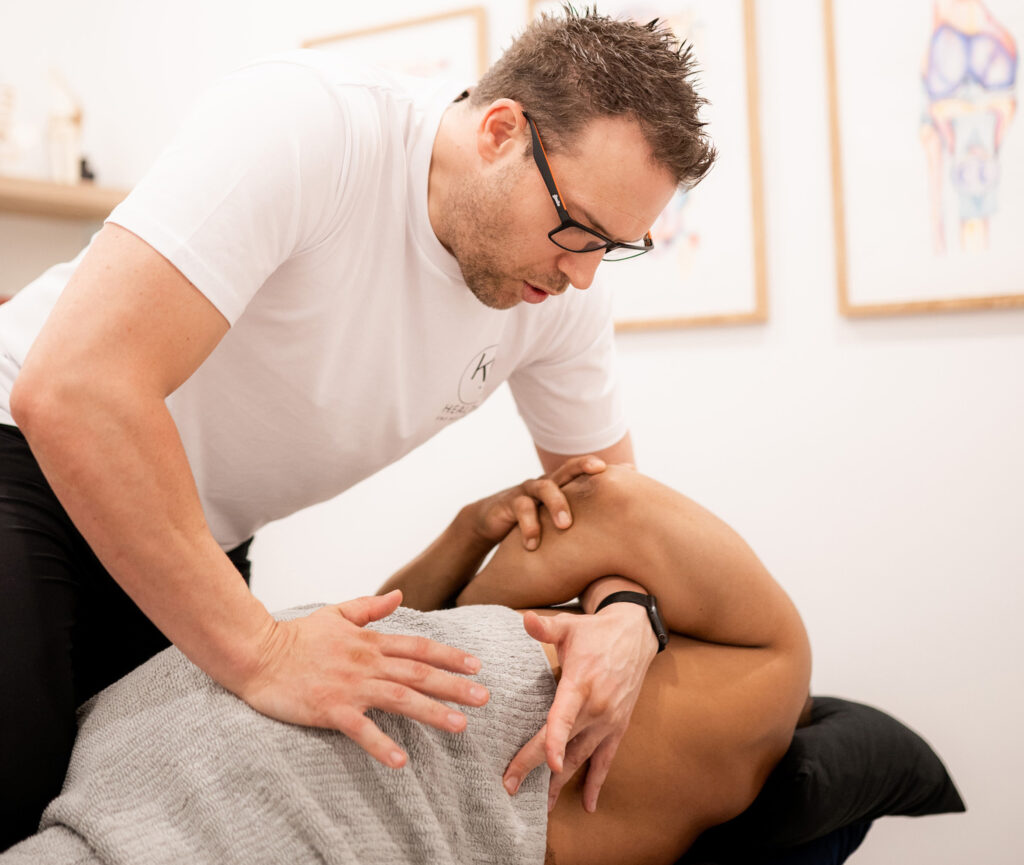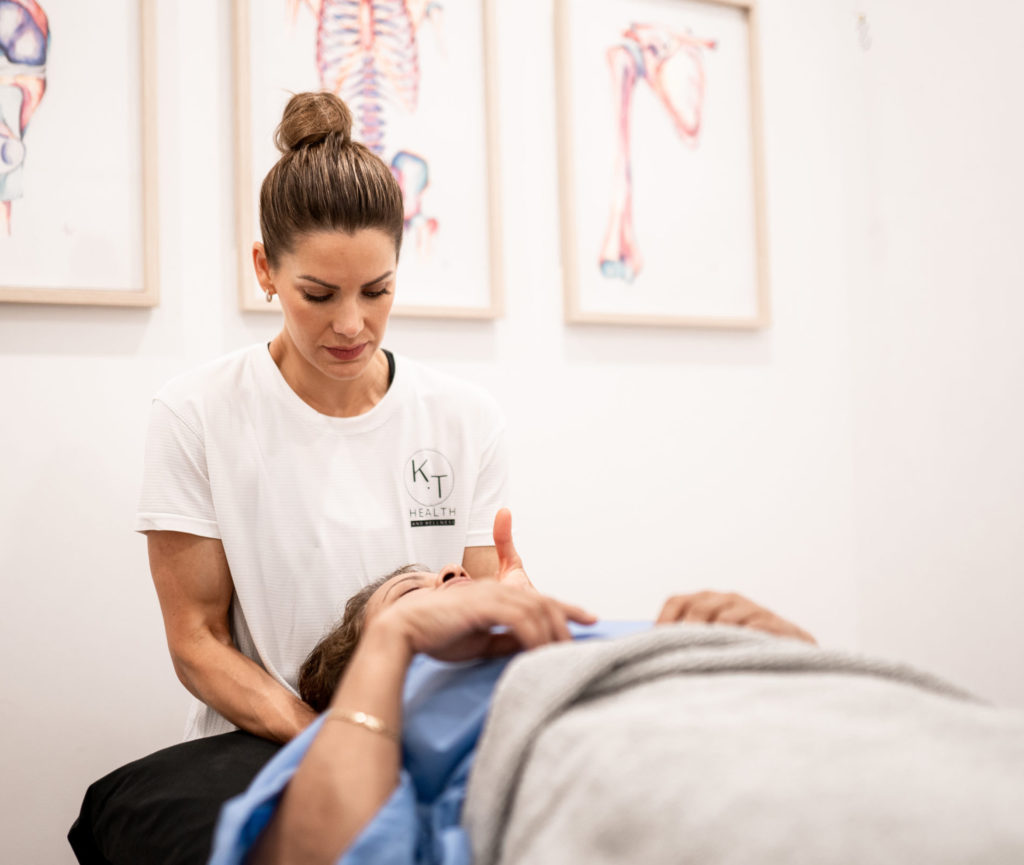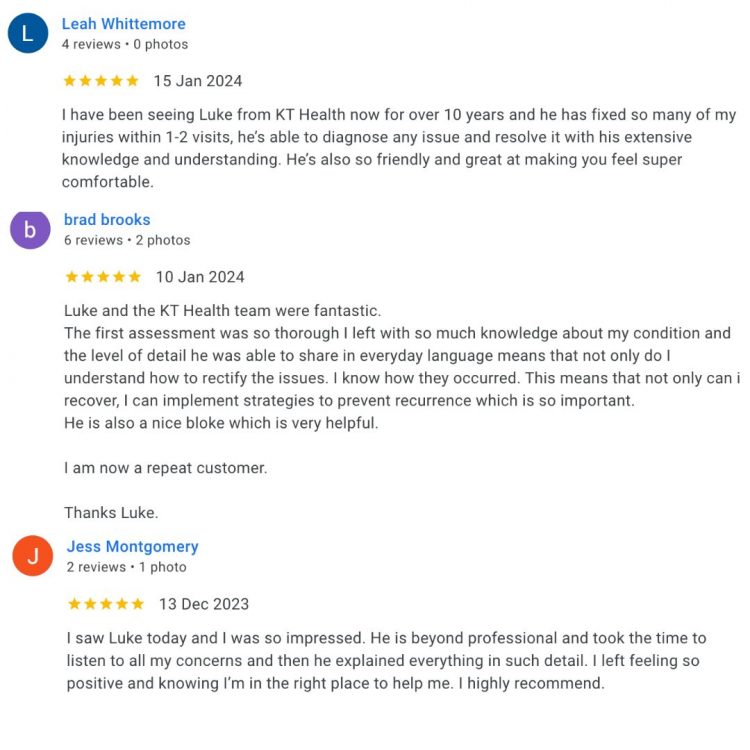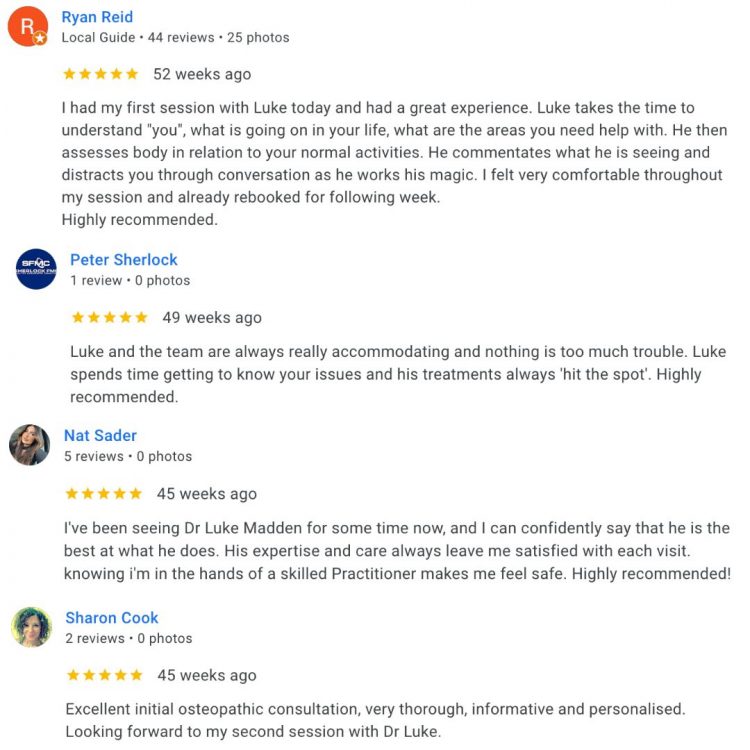Everything You Need to Know About Ischiogluteal Bursitis
What is Ischiogluteal Bursitis?
Ischiogluteal bursitis is when the bursa located between the sit bone (ischial tuberosity) and the gluteal muscles becomes inflamed or irritated. This small, fluid-filled sac is meant to reduce friction between tissues, but when it’s aggravated, often from sitting too long or overuse, it can cause buttock pain, especially when sitting or stretching the hamstring.
An analogy…
Think of a bursa like a small water balloon cushioning your muscles from the bone. If you sit or press on it too much, it gets squashed and inflamed, like sitting too long on a bruise.
What causes ischiogluteal bursitis?
The ischial bursa lies between the ischial tuberosity (your “sit bone”) and the gluteus maximus muscle. It becomes inflamed from repetitive friction or direct pressure, especially with activities that involve prolonged sitting, running, or hamstring stretching. This leads to pain, swelling, and discomfort over the lower buttock.
What are the signs and symptoms of ischiogluteal bursitis?
- Pain in the lower buttock, near the sit bone
- Worsens with sitting, especially on hard surfaces
- Pain with walking, running, or stretching the hamstrings
- Tenderness over the ischial tuberosity
- Pain may feel deep and dull, and sometimes mimic hamstring origin tendonitis
What tests are used to diagnose on ischiogluteal bursitis?
Palpation: Direct pressure over the sit bone reproduces symptoms
Stretching tests: Pain when stretching the hamstrings
How long does ischiogluteal bursitis take to heal?
Mild cases can improve in 2 to 4 weeks with rest and modification. More stubborn or chronic cases may take 6 to 8 weeks. Severe or misdiagnosed cases may persist for several months if not properly managed.
How does ischiogluteal bursitis happen?
- Prolonged sitting on hard surfaces
- Direct trauma to the buttocks
- Tight hamstrings pulling on the bursa
- Weak glutes or poor posture when sitting or standing
- Running or long-distance walking with poor technique
- Overuse or sudden increase in physical activity
What treatment can help ischiogluteal bursitis?
- Rest from aggravating activities
- Ice application in early stages to reduce inflammation
- Manual therapy (e.g. massage, dry needling, soft tissue release)
- Postural correction and sitting modifications
- Stretching and strengthening exercises to address muscular imbalances
What exercises or stretches can I do for ischiogluteal bursitis?
- Gentle hamstring and glute stretches
- Glute activation exercises
- Core stability drills
- Hip and postural strengthening
What products can help with ischiogluteal bursitis?
STOP GUESSING – START MOVING
See what other people have said about our osteopaths
Trustindex verifies that the original source of the review is Google. KT health has really helped my back and i have been able to get back into competitive sportTrustindex verifies that the original source of the review is Google. Absolutely amazing, I see Louie Nouh who always listens and caters to my needs. He is amazing at his job and always helps alleviate my pain. I highly recommend Louie.Trustindex verifies that the original source of the review is Google. Friendly, supportive staff. Such a lovely place to exercise! Highly recommend.Trustindex verifies that the original source of the review is Google. Amazing instructor, I am new to Pilates felt very comfortable & supported.Trustindex verifies that the original source of the review is Google. I have been suffering from shoulder and neck pain for months - I saw Dr Louie Nouh a couple of time. His treatment really relived the pain. I have full range of movement now. His knowledge on exercise is fantastic.Trustindex verifies that the original source of the review is Google. Absolutely love reformer at menai. Instructors are amazing. Love Michaela and love the small classes. Highly recommend!Trustindex verifies that the original source of the review is Google. The trainers are all amazing , they explain everthing step by step and help where needed . It is an amazing place to relax get to know other people have a laugh . I recommend for anyone .Trustindex verifies that the original source of the review is Google. Ever since I came here I’ve been looked after by Louie and my shoulder is already feeling much better. Highly Recommend these are good people.Trustindex verifies that the original source of the review is Google. SENSATIONAL Chiropractor in Menai! I attended my first appointment with Dr Louis Nouh at KT Health & Wellness who is an absolute genius even after one session with him. He explained everything he intended to address about my lower back condition, all in easy to understand, layman’s terms. He said he would call me the next day to follow and see how I was feeling after our session and guess what, he did! During our session, he made me feel relaxed and comfortable especially as it was my first chiropractic appointment EVER! For some reason, I am actually looking forward to my subsequent sessions with him next week. Don’t get me wrong, he did poke, prod and crack me as necessary but the results made it seem worth it.Trustindex verifies that the original source of the review is Google. I have been seeing Melinda now for a couple of months to help with bursitis in my hip. She is one of the best practitioners I’ve ever seen.. With the use of various tools and techniques she has helped me recover much quicker than I expected. Thanks Mel and see you tomorrow!
We don't offer magic fixes or cures, but a sustainable approach to back pain.
Our Osteopaths will offer you a road map to help you take control of your back pain and feel great again.
BOOK YOUR OSTEOPATH VISIT TODAY
Book a Time with Dr Luke Madden Below
Book a Time with Dr Melinda Madden Below
Already have an account?
Book as a guest
- Book an Appointment






